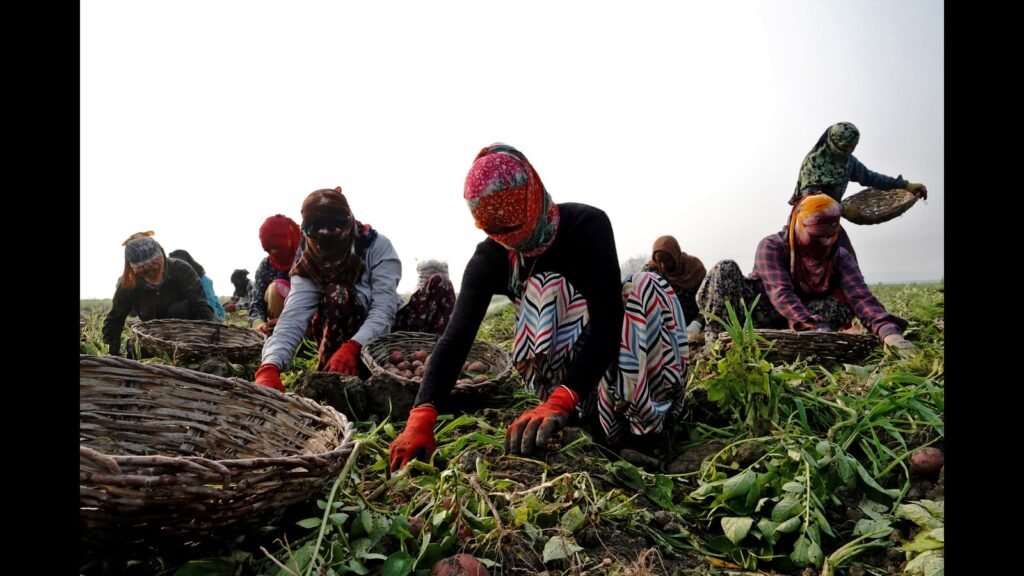
The Chief Economic Adviser Termed Agriculture “The Sector of the Future” at the release of the economic survey 2024-25. So, the expectations were high that fY26 budget would underline a strategic vision for the sector. Finance Minister Nirmala Sitharaman’s Budget Speech and the Budget Document Don’T Disappoint on this country.

Just to recall, the budget for the department of Agriculture and Farmers’ Welfare under the Union Agriculture Ministry for Fy26 Stands at 1.27 Lakh Crore. Half of this has been allowed to the PM Kisan Scheme, which offers Direct Unconditional Cash Transfers to Land-Owning Farmers. A third of the reminder goes to the interest subvention scheme for concessional short-term credit to Farmers. The next Major Allocation is for the PM Fasal Bima Yojana (Crop Insurance Scheme). And then, indicative of the direction along the government plans to nudge indian block, a Slew of New Initiatives Have Been Declared: Cotton Technology Mission ( 500 Crore), Mission for Pulses ( 1,000 Crore), National Mission for Hybrid seeds ( 100 Crore), Mission for Fruits and Vegetables ( 500 Crore), and support for Bihar’s Makhana Board ( 100 Crore).
The budget is forward-looking on Several Counts. To start with, the budget outlines a strategic focus on Agricultural Inputs, Particularly Institutional Credit for Farmers, and Developing seeds for Higher Productivity and Higher Cliator CLIATER CLIATER CHESILIENCE. An expanded agri-credit ecosystem through kisan credit card allows a green tum of credit and greatness to Farmers, Fishermen, and Dairy Farmers.
The seeds mission recognies the need to drive Agricultural Productivity as Risks Such as the Climate Crisis Intensified and the Need for Securing Food and NEEDS of the Population Grows. There is also an Emphasis on Post-Harvest Storage and Management with An Eye on Reducing Crop Wastage, Evident in the Robust Allocations to the Agriculture Infrastructure Fund and Programms At Ideed at Panchayat K Levels. The focus on infrastructure to handle perishables is also pronounced, to ensure better market linkages and reduce logistical hurdles.
If the Six-Yaar Mission for Aatmanirbharta in Pulses Results in Increased Domestic Production, it can reduce imports and play a Role in Easing The Pressure on the Consurations POCKET GIVEN the ROL POLCES PULSS Another Interesting Directional indication is the fruits and vegetables missions. After Discontinuing Operation Greens which focussed on Tomatoes, Onions, and Potatoes (Top), The Government Now Intends to Redirect the Spended Basket of Fruits and VECE Ient Supply. Whether the allocation for this suffices is a different question altogethr. The cotton technology mission is perhaps a recognition of both the crop’s growing importance as a major cash crop as also the pain from the pain from inconsistent yeelds that cotton growters has done to factor.
The PM Dhana Dhaanya Krishna Yojana, which will concentrate on various existing and future schomes in 100 low-performing districts to improve their products. Inable farming, and improved irrigation and credit access. Modelled on the aspirational Districts Program, It UndersCores The Government’s Intent to Leave No Geography Un-Serviced/Under-Serviced as Part of Seconded as Part of Securing the Nation’s Agation’s Agation’s Agation’s AGARICULTURAL FUTURE.
While the Vision Story in the Budget is Encouring, The Misses can’t be ignored. The Department of Agriculture Sees a Contraction in Allocation, of About 4,000 Crore, from the revised Estimates (Re) for the current fiscal. The crop insurance scheme has also lost Sheen. The budget for the flagship insurance scheme has been trimmed from the actual spending in fY24, even as the impact of the climate crisis has worse for Indian Agriculture. And, despite an increase in loan limits under KCC, The Budget Allocation for the Modified Interest Subvention Scheme remains the same as as last year ( 22,600 Crore), Indicating Lower Expected Credit Uptake. The procurement for pulses under the pulses mission will be capped, as only quantities offered by registered Farmers through Local Co-OPS will be procured, Limiting the scope of the initative.
While the vision quotient is admirable, we need to review the fin print to know if the financial backing is sufficient to realise it.
Shweta Saini is CEO, and Monil Sharma is Analyst, Arcus Policy Research.The Views Expressed Are Personal




